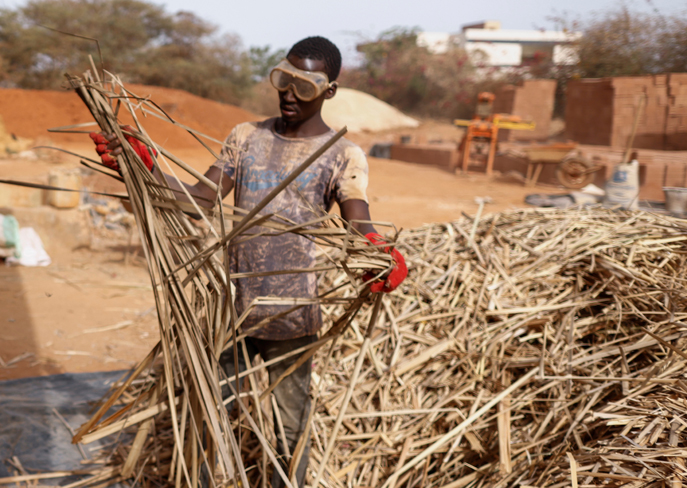Comment: Kyra Appleby of CDP draws lessons from three cities that are working in tandem with nature to become more resilient
For centuries, humans have harnessed nature to build secure, climate-resilient and sustainable homes. From the Ma’dan people of Iraq, whose floating houses made entirely of reeds can be disassembled and rebuilt in a matter of days, to the Khasi of North India, who rely on a system of ladders and walkways to help navigate their natural environment, there are numerous such examples of humans innovating and working in tandem with nature.
Today, cities globally are also utilising nature in their efforts to build safe, secure and zero emissions spaces for their populations. Representing up to 70% of global emissions, decisive and innovative action from cities is crucial in the fight against climate change.
However, cities have a dual role to play. As well as tackling climate change, cities must also strive to be resilient, healthy, and equitable places to live and work. It is city dwellers across the globe who find themselves on the frontlines of climate change, with some of the most vulnerable groups worst-affected. For instance, in 74% of cities, climate change is increasing risks to already vulnerable populations.
The need for nature-based solutions to accelerate decarbonisation and for cities to build resilience is increasingly urgent
In this second year of the decade of climate action, the need for nature-based solutions to accelerate decarbonisation and for cities to build resilience against the reality of climate change is becoming increasingly urgent.
Of the 812 cities that disclosed to CDP in 2020, we’re seeing a number of innovative examples of how cities are incorporating nature-based solutions, such as through expanding urban green spaces and incorporating green infrastructure, in their efforts to mitigate and adapt in the face of this reality. Here are just three:
Dakar, Senegal
Senegal’s capital is one of the 34 African cities reporting through the CDP/ICLEI unified reporting system. The city is particularly focused on cutting emissions and reducing the energy consumption associated with the running of its heritage buildings.
Dakar is working in sync with nature to achieve this goal by utilising an invasive plant species, typha domingensis, in innovative ways. When incorporated into a building’s design, the plant acts as a natural form of insulation. This nature-based solution has been put to good use at the Hospital of Geriatrics and Gerontology of Ouakam, where the plant helps to keep the hospital’s elderly patients comfortable while being treated and also reduces energy consumption, helping the city to progress toward its emissions reduction goals.

Seberang Perai, Malaysia
Seberang Perai is one of 100 cities in Asia reporting through the CDP/ICLEI unified reporting system. The Malaysian city is utilising its natural mangrove forest ecosystem as a crucial tool in mitigating and adapting to the impacts of climate change.
Lying on Malaysia’s northwest coast, Seberang Perai is home to extensive mangrove forests, a habitat that sustains marine wildlife and is also an integral source of livelihood for local fishing communities. Analysis by the United Nations Environment Programme shows that Malaysian mangroves support a fishing industry worth $250,000 per square kilometer each year.
Mangrove forests serve numerous functions. As well as being hotbeds of marine biodiversity, the forests protect Seberang Perai’s coastal areas from natural hazards and extreme weather events. Mangrove trees also contribute to mitigating the effects of climate change by storing large amounts of carbon, acting as a carbon sink. To ensure this natural resource is protected and continues to flourish while tackling the climate crisis, Seberang Perai is working to preserve and restore its mangrove forests by re-planting new trees.
Southend-on-Sea, United Kingdom
Last year, Southend-on-Sea, on the coast of south-east England, began development of the Launchpad, an innovation centre for small and medium businesses to hire workspaces. Launchpad’s centre, which is at increasing risk of flooding from a nearby river, has been able to incorporate additional green infrastructure beyond the original grass area and green roof with solar PV through the EU’s Interreg 2 seas project.
The centre will now include swales, rain gardens, trees, a meadow, and permeable paving to mitigate against flood risk. Additional benefits of the project and the incorporation of green infrastructure include increased biodiversity, a reduction in heat stress, and improved air quality in the area.
We have less than a decade to cut emissions by 45% and build a resilient planet for all. Cities disclosing to CDP have shown that nature-based solutions offer enormous potential in helping them to tackle this challenge, and become resilient, healthy and equitable places to live and work.

Kyra Appleby is global director of cities, states and regions for CDP.

